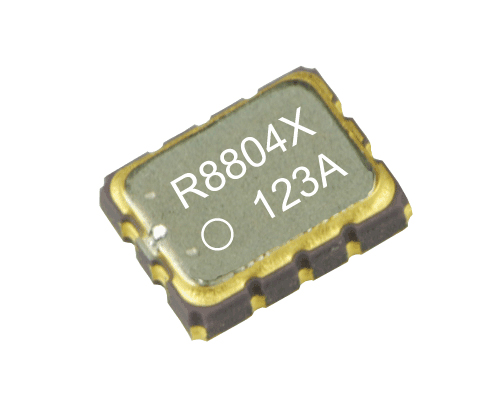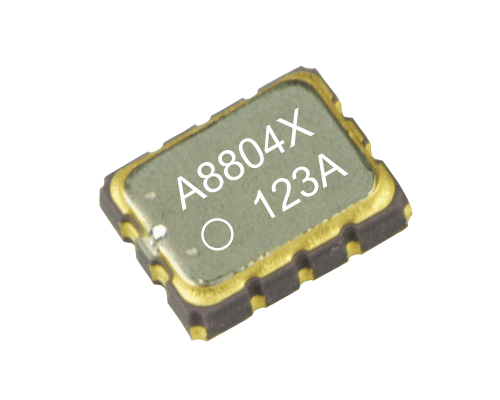Munich, March 12, 2018 – Seiko Epson Corporation (TSE: 6724, “Epson”), the world leader in quartz crystal technology, today introduced the RA8804CE and RX8804CE, two new real-time clock (RTC1) modules with built-in digital temperature-compensated crystal oscillators (DTCXO2).
The new RTC modules are housed in Epson’s smallest-ever RTC package (maximum dimensions: 3.2 x 2.5 x 1.0t mm). The RA8804CE is designed for AEC-Q100-compliant3 automotive applications, while the RX8804CE is designed for industry systems. Both provide high-accuracy timekeeping in electronic systems while meeting the need for a small form factor and low current consumption.
Today’s industrial equipment, such as smart grid equipment, click-charge systems, security systems, and countless other systems and applications run based on time information, so accurate keeping is a must. High-accuracy tracking of time and date information is also needed in equipment that is installed in vehicles, outdoors, and other environments where systems are exposed to ambient temperature extremes. Moreover, there is a growing need for RTC modules that consume less current and remain frequency-stable over a wider temperature range due to accelerating integration and downsizing of electronic equipment and a growing desire on the part of companies to reduce their environmental footprints.

In general, however, higher accuracy tends to come at the price of higher power consumption, making it difficult to maintain or improve the accuracy of real-time clocks, which are built by combining a crystal unit, oscillation circuit, and timekeeping IC. For the new modules, Epson succeeded in reducing the power consumption and expanding the operating temperature range of the new modules. This was achieved by fabricating tiny, accurate tuning fork crystal units and using a new circuit design that enables the crystal unit to be driven at low power.
The new RA8804CE and RX8804CE consume 0.35 µA of current, which is 50% less than the 0.7 µA consumed by the RX8900CE (an earlier equivalent Epson RTC module). The maximum operating temperature was expanded from 85°C to 105°C. In addition, these modules are equipped with an expanded number of programmable interrupt functions4, a time stamp, and 24-bit timer. These new functions lighten the load on the CPU.
Epson individually adjusts and guarantees the timekeeping accuracy of modules at the factory. This renders checking of timekeeping accuracy unnecessary and helps to increase design efficiency and quality.
Going forward, Epson will continue to leverage its unique technologies to provide customers with reliable, easy-to-use, industry-leading crystal device products.
Main Specifications
| Product number | RA8804CE, RX8804CE |
| Temperature-compensated operating voltage | 1.5 V (Min.) |
| Clock supply voltage | 1.5 V (Min.) |
| Timekeeping current | 0.35 µA (Typ.) |
| Frequency stability -40°C to +85°C | XA: ±3.4×10-6 XB: ±5.0×10-6 |
| Frequency stability +85°C to +105°C |
±8.0×10-6 |
| Operating temperature range | -40°C to +105°C |
| Interface | I2C (400 kHz) |
| Automotive standard conformance | RA8804CE: AEC-Q100 RX8804CE: — |
| External dimensions (mm) | 3.2 x 2.5 x 1.0t (Max.) |
New Features
1: A real-time clock module is a single-package product that has a real-time clock IC with clock, calendar, and other functions and an integrated 32,768-kHz crystal unit. These modules not only benefit users by eliminating the need to design oscillator circuits and adjust clock accuracy, their small size and level of integration also allow customers to use their board space more efficiently.
2: A digital temperature-compensated X’tal (crystal) oscillator is an oscillator (crystal unit and oscillation circuit) with a function that applies corrections to frequencies, which change in response to the ambient temperature of the crystal unit. To output a stable frequency within a range of temperatures, TCXOs have a circuit that compensates the output frequency based on signals from a temperature sensor. DTCXOs use a circuit to digitally compensate the frequency.
3: The Automotive Electronics Council (AEC) is an industry group that creates standards for the reliability and qualification of automotive electronics. It was formed by the “Big Three” U.S. automobile manufacturers in partnership with major electronic component manufacturers. AEC-Qxxx is a de facto global standard that has been widely adopted as a standard for automotive electronic devices.
4: The RA8804 and RX8804 is equipped with an SOUT pin to provide far greater options for interrupt functions than the comparable Epson module. The SOUT pin outputs the value for a selected flag, such as a voltage detection flag, a time update flag, or an EVIN detection flag. The SOUT pin can also be used as a general-purpose output port whose high/low output can be specified with software, so the optimal operation for a given system can be set with software.
Notes:
Please see the link below for further details.
RA8804CE: www5.epsondevice.com/en/products/rtc/ra8804ce.html
RX8804CE: www5.epsondevice.com/en/products/rtc/rx8804ce.html
To receive even more information like technical data sheets, samples, EVBs or price information please contact an Ineltek office within your area or contact us at info@ineltek.com.